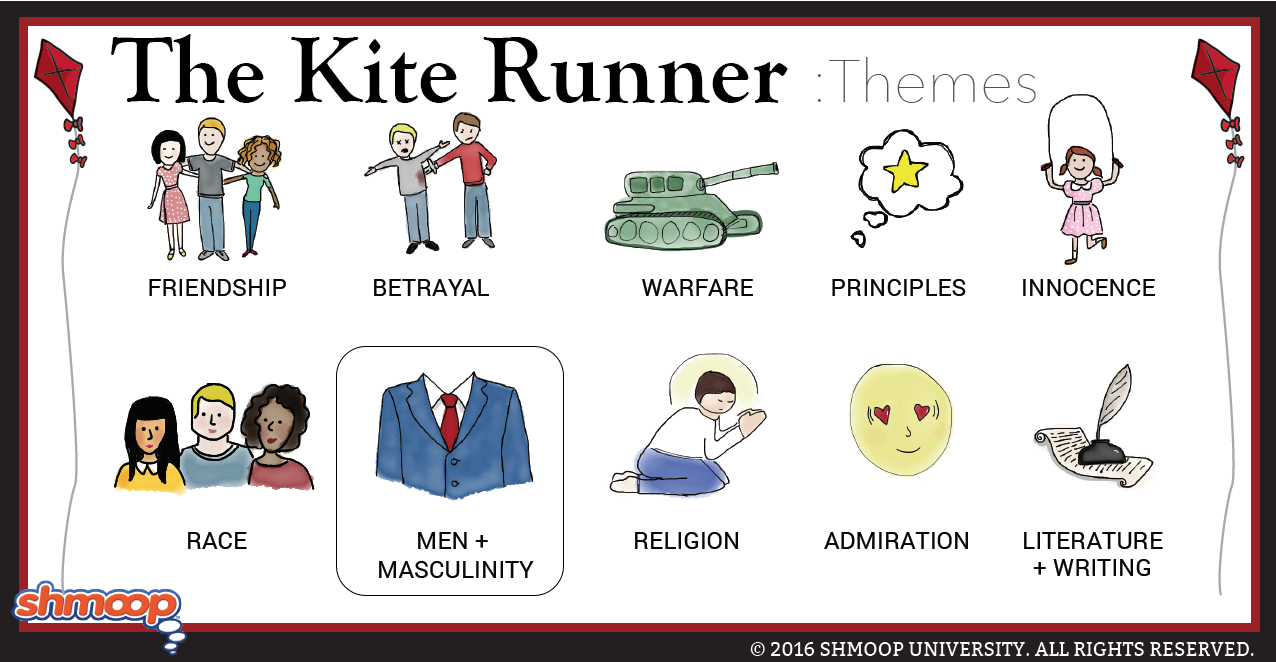 (Click the themes infographic to download.)
(Click the themes infographic to download.)
There aren't a lot of women in The Kite Runner. In fact, Hosseini really only spends time with two women: the protagonist's wife and mother-in-law. Further, our protagonist grows up in a household full of men, and his father embodies a robust masculinity (honor and brute strength and all that). One problem: the protagonist in The Kite Runner doesn't conform to traditional model of manhood. The novel asks some tough questions about what it really means to be an Afghan man – or a man in general – and ultimately embraces some ideas of traditional manliness.
Questions About Men and Masculinity
- Describe the women on the periphery of this novel: Amir's mother, Sanaubar, and Khanum Taheri. Is Soraya different from these women? The same? Does Hosseini develop her character more than these other women? If so, why?
- Afghan's unofficial national sport is buzkashi, a game in which a skilled horseman rides around with a goat or calf carcass and tries to drop it in a special scoring circle. The other riders may kick and whip the rider with the carcass in order to stop him. Why does Baba seem to love this sport? Why does it scare Amir? How does buzkashi embody the qualities Baba often praises?
- Rahim Khan, Baba's good friend, always seems to be around Amir's house. He's more or less a part of the household. Does Rahim Khan offer Amir a different male role model? Is Rahim Khan more "feminine" than Baba? Is this what attracts Amir to Rahim Khan?
- What version of masculinity do characters like Ali and Hassan present? Do these characters question or support Baba's version of masculinity?
- In the end, what definition or model of masculinity does The Kite Runner embrace?